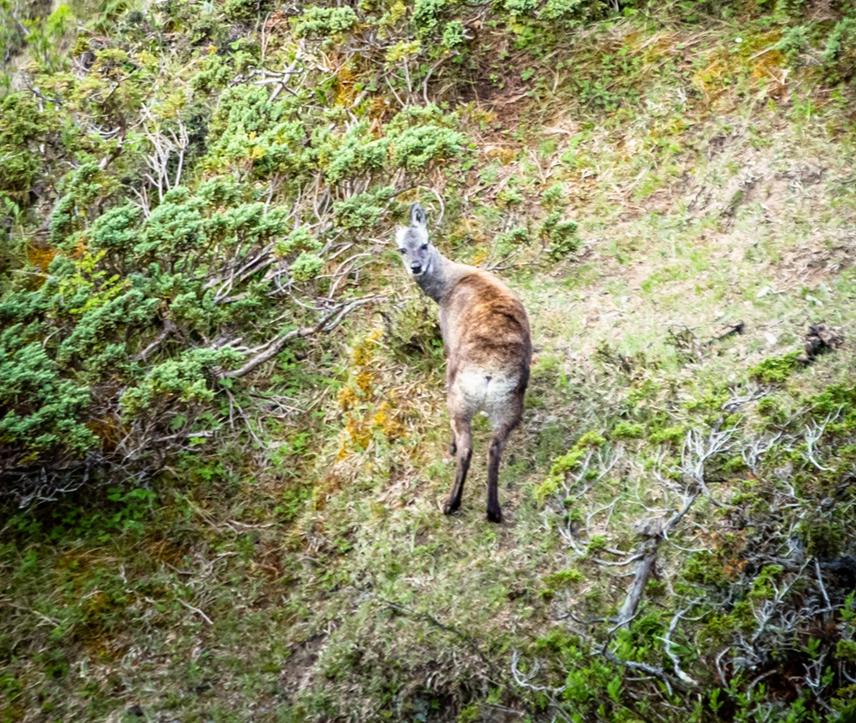Bishnu Achhami
Other projects
3 Oct 2022
Engaging Local Communities in Musk Deer Conservation in Manaslu Conservation Area, Nepal
Nepal harbours three species of Musk deer. They are globally Endangered according to IUCN Red List and listed in CITES Appendix I. These species are distributed from 2200m to 4300m elevation. Manaslu Conservation Area is least explored for Musk deer conservation. On top of that, local people/poachers are killing them for musk pod, flesh and skin in Manaslu Conservation Area. These activities increase survival threat to Musk deer. It is important to aware local people to reduce these activities for long-term survival of Musk deer. Therefore, we aim to transform local people to citizen scientists for the species conservation through socio-scientific studies.

Female Musk Deer in its habitat.
Three species of Musk Deer, that occur in Nepal are assessed globally Endangered and listed in CITES Appendix I. Manaslu Conservation Area (MCA) is one of the potential habitat of Musk Deer. Their population is decreasing due to poaching the animal for musk pods, hide, skin and fur generally setting snares and also shooting by guns. The situation is grave in MCA as local communities in the area illegally hunt the animal for the sake of flesh.
This project aims to train and develop ten citizen scientists amongst the local community in the area for the local level long term conservation of Musk Deer. Since, they will be involved during and after the project, they will be explicitly aware about the conservation needs, issues, threats, conservation measures and the actions needed. Team of ten trained citizen scientists will lead the regular snare removal campaign in the habitat of Musk Deer.
Details on distribution, threats and conflicts, and social dynamics of poaching of Musk Deer in the study area will be collated through available information from national park office, seizure data, village council and literature review. In addition, Focus Group Discussion (FGD) will be conducted to understand local people's perception about Musk Deer, willingness, suggestions to minimize the conflict and threats and possibilities of ecotourism and informal inter personal role for the long term local level conservation of the species.
Camera traps will be placed at ten different stations along transects to assess the local distribution pattern of the species. Sign surveys including pellet group survey will be conducted. Pellets will be collected, preserved and analyzed microscopically in the laboratory to identify internal parasites and possible diseases caused by the parasites occurring within the animal.